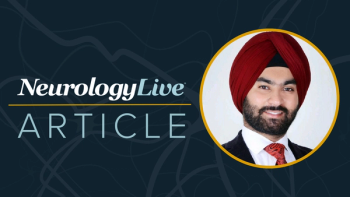
Final Thoughts on Treating Narcolepsy
Michael J. Thorpy, MD: This has been extremely informative. Before we end the discussion, I would just like to ask each of the panelists, do you have any final thoughts with regard to the diagnosis and management of narcolepsy? Any final takeaway points for the clinicians who are listening? Russ?
Russell Rosenberg, PhD, DABSM: It’s an exciting time for us in the field because new treatments are being developed and we expect more in the future. We’re doing a better job of identifying patients earlier, so there isn’t such a long gap between the development of symptoms and an actual diagnosis. I think we’re doing a bit better with that, but we’re going to have to continue to do better. I think we can all say we’re going to be working on this problem throughout our careers—and I think that’s exciting personally and professionally.
Michael J. Thorpy, MD: Kiran, what about you? Last thoughts?
Kiran Maski, MD, MPH: I think the additional comorbidities associated with narcolepsy are something to emphasize. In pediatrics, we didn’t mention this, but precocious puberty is actually not uncommon. Up to 20% of patients will have that. Obesity can be a real struggle and is present in up to 70% of patients. Mood disorders, cognitive difficulties, and other endocrine problems have been reported, as well as hypertension. So there is a strong role for the primary care provider in caring for the patient.
Michael J. Thorpy, MD: I’d just like to say that for any patient who has sleepiness, you have to think about narcolepsy. So many of these patients are misdiagnosed or underdiagnosed. It’s such a devastating condition for patients, and it’s so important to recognize and treat it. Now, of course, we have effective treatments available that can make really big differences in patients. It’s essential that physicians keep an open mind when they see anyone who’s sleepy. Even though they do have these other conditions, like sleep apnea or maybe they’re sleep deprived, consider the possibility that they also have underlying narcolepsy. Eveline?
Eveline Honig, MD, MPH: I want to add that young adults, teenagers, older teenagers are all sleepy in school. But if one continues to be sleepy, just think about it. Many times, I’ve heard, “Oh, but they’re all sleepy. They’re all sleeping through my class.” Also, closing the gap is very important, and it makes sense economically. They can work. They’re not going on disability. With medications and proper management, they can be productive members of society.
Michael J. Thorpy, MD: Alon, any final thoughts?
Alon Y. Avidan, MD, MPH: Sure. This has been a wonderful discussion, and it’s really a privilege to be here speaking with you. When you look at and read the literature about narcolepsy, it’s presented as this rare neurologic condition with such X, Y, and Z manifestations. I would say that this is not a rare condition. This is an uncommon condition. The statistics of narcolepsy are very similar to multiple sclerosis. If you think this is rare, you may not be looking for it. So I think we have to keep our radar screens on and know that. The challenges still remain in making the diagnosis, given the tools that really require us to go through the sleep diary, sleepiness scales, and sleep tests, which have to be done correctly. I think that remains a challenge, in addition to some of the gaps in the medications.
Michael J. Thorpy, MD: Thank you all very much for your participation in this panel. I think it’s been extremely informative. I’ve learned a lot from you, and I’m sure everyone else has, too. On behalf of our panel, we’d like to thank you for joining us. We hope that you found this NeurologyLive® Peer Exchange to be useful and informative. Thank you.
Newsletter
Keep your finger on the pulse of neurology—subscribe to NeurologyLive for expert interviews, new data, and breakthrough treatment updates.



































